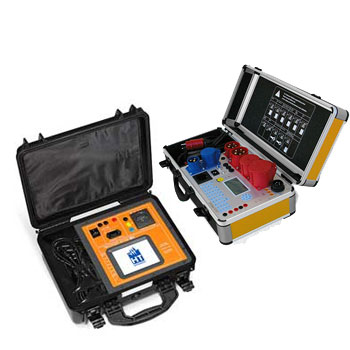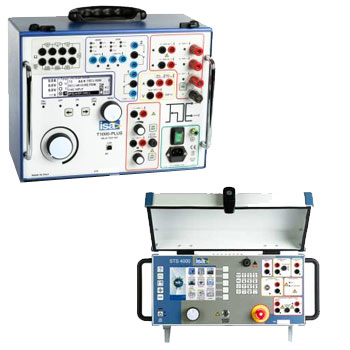- Accuracy class 2 per EN 13190
- Nominal size 63, 80, 100 and 160
- Scale ranges from -30 ... +200 °C
 Datasheet Datasheet |
 User Manual User Manual |
- Scale ranges from -30 ... +500 °C
- Large choice of nominal sizes from 25 ... 160 mm
- Case and stem from stainless steel
- 5 different connection designs
 Datasheet Datasheet
|
 User Manual User Manual
|
- Robust, hermetically sealed case
- Accuracy: ±1 % of full scale value ASME B40.200 (grade A)
- External reset for reference temperature adjustment
- Dished dial (anti-parallax) for ease of reading
- Adjustable stem and dial version enables optimal process connection

 Datasheet Datasheet |
 User Manual User Manual |
- Nominal sizes 63, 80, 100, 160 mm
- Robust, hermetically sealed case
- External reset for setting the reference temperature
- Dished dial (anti-parallax) for ease of reading
- Adjustable stem and dial version enables optimal process connection
 Datasheet Datasheet
|
 User Manual User Manual
|
- Scale ranges from -70 ... +600 °C
- For extreme ambient temperatures
- Maintenance-friendly bayonet case
- All stainless steel construction
- Individual stem length from 63 ... 1,000 mm

 Datasheet Datasheet
|
 User Manual User Manual
|
 User Manual User Manual
|
- Case and stem made of stainless steel
- Design per DIN EN 13190
- Different designs of connection and mounting
- With capillary
- With various fixed connections
 Datasheet Datasheet
|
 User Manual User Manual
|
- Case and stem from stainless steel
- Nominal size 63 [2 ½"], 100 [4"]
- Scale range -40 … +250 °C [-40 ... +482 °F]
- Easy-to-read analogue display
- Electrical output signal e.g. 4 ... 20 mA
 Datasheet Datasheet |
 User Manual User Manual |
- Scale ranges from -200 ... +700 °C [-328 ... 1.292 °F]
- Fast response behaviour
- Case and stem from stainless steel
- Various connection and case mounting designs
 Datasheet Datasheet |
 User Manual User Manual |
- Cost-effective “2 in 1” temperature measurement
- Compact design
- Application ranges from -200 ... +700 °C
- “Plug-and-play”, thus no transmitter configuration necessary

 Datasheet Datasheet
|
 User Manual User Manual
|
- Dead space free
- Hygienic design
- Aseptic process connections
- Material and surface finish quality in accordance with pharmaceutical industry directives and standards
 Datasheet Datasheet |
 User Manual User Manual |
 User Manual User Manual |
 User Manual User Manual |
- Instruments meet the highest mechanical and measurement-technology standards
- Very high vibration resistance
- Especially robust design with cushioning fluid for a long service life
- All stainless steel design
 Datasheet Datasheet
|
 User Manual User Manual
|
- Insensitive to vibrations
- Non-toxic thermometric liquid
- Measuring ranges from -30 ... +200 °C
 Datasheet Datasheet
|
 User Manual User Manual
|

Dial Thermometers – Rugged On-Site Indication for Every Application
Dial thermometers provide reliable, power-free temperature indication right at the measuring point. Depending on the principle—bimetal, gas-actuated (gas filled) or liquid expansion—they cover a wide range from cold to high-temperature applications. Variants with case diameters of 63–160 mm, vertical/horizontal mounting, common process connections (G ¼ / G ½ / NPT) and optional thermowells ensure durability and media compatibility.
ICS Schneider Messtechnik helps you select scale range, immersion length, thermowell and materials (e.g., 316L stainless steel for corrosive media)—including calibration and, if required, IIoT retrofitting (e.g., with additional probes/transmitters).
FAQ on Dial Thermometers
Answers on measuring principles, accuracy, installation, thermowells, materials and maintenance.
Which measuring principles exist and when should I use them?
| Principle | Typical Range | Advantages | Notes |
|---|---|---|---|
| Bimetal | approx. −20…+300 °C | Robust, cost-effective | Good local indication, moderate dynamics |
| Gas-actuated | approx. −100…+600 °C | Fast response, long capillary runs | Optional remote capillary |
| Liquid expansion | approx. −40…+250 °C | Stable display, good readability | Avoid certain horizontal positions (design dependent) |
What accuracy classes are common?
Typically Class 1 to 2 (guideline), depending on model. For test/reference use, choose tighter classes and schedule regular calibration with certificate.
How do I choose the correct scale range?
The operating point should be in the middle third of the scale. Allow headroom for process excursions to avoid pegging the pointer.
Which process connections are available?
| Connection | Standard | Typical Use |
|---|---|---|
| G 1/4, G 1/2 | ISO 228 | General plant engineering |
| ¼" NPT, ½" NPT | ASME | International/US installations |
| Tri-Clamp/Varivent® | Hygienic | Food/pharma with thermowell |
Do I need a thermowell?
Recommended for pressurized, abrasive or corrosive media and for frequent instrument changes. It protects the device and simplifies maintenance.
What immersion length should I use?
Rule of thumb: ≥ 10 × stem diameter (min. 50 mm). This reduces conduction errors and improves measurement accuracy.
What about mounting position?
- Ensure good flow exposure to the medium.
- Avoid heat bridges via housing/fittings.
- Dampen vibration (filled case/mounting), place for good readability.
Which case and wetted materials are available?
Stainless steel (e.g., 304/316L) for demanding environments; brass/aluminum for standard duty. Front-side IP ratings up to IP65/67 are available (model dependent).
How do I read the scale correctly?
Read the pointer tip tangent to the graduation mark. Use one unit (°C/°F) consistently for documentation; mind dual scales.
Can dial thermometers provide remote indication?
Gas-actuated types allow capillary lines between measuring point and display—useful for hard-to-reach locations.
How do I handle vibration and shocks?
Filled cases (e.g., silicone/glycol) reduce pointer flutter and increase lifetime. Additionally, mechanically decouple the instrument if possible.
What is important for hygienic applications?
Hygienic connections (Tri-Clamp/Varivent®), polished surfaces, suitable gaskets and CIP/SIP resistance; often combined with thermowells.
How often should I calibrate?
For process indication typically annually; for quality-critical processes use shorter intervals. Check after over-temperature or mechanical stress.
Can I add digitalization later?
Yes. Add auxiliary RTD/TC probes in the thermowell or surface probes with a transmitter (4–20 mA/HART/Modbus) to connect to PLC/Edge/Cloud.
Common error sources?
- Insufficient immersion depth → systematic offset
- Improper mounting position for liquid systems → display error
- Strong vibration → pointer flutter/mechanical wear
What documentation should I keep?
Point sheet with ID, medium, range, connection, immersion length, materials, thermowell data, location and calibration history for audit & service.
Does ICS Schneider support sizing?
Yes. We size range and immersion length/thermowell, select suitable materials/connections, provide calibration certificates and support integration into your plant.























































































































































































